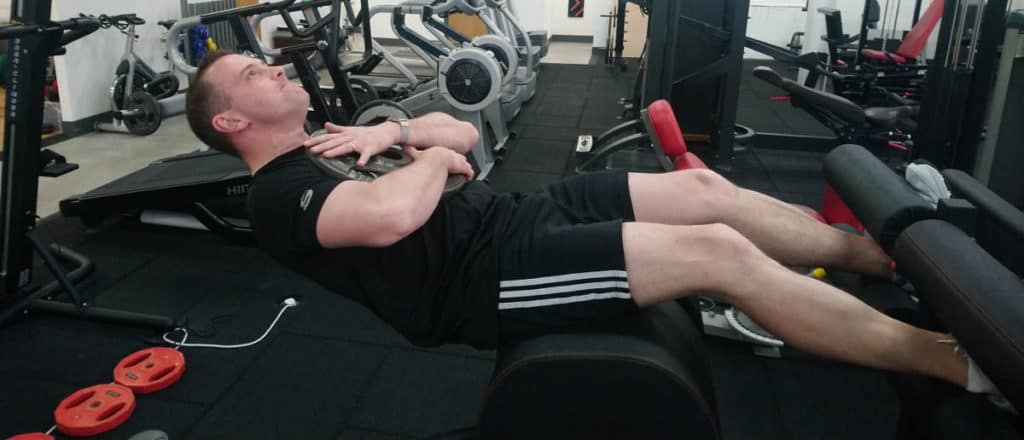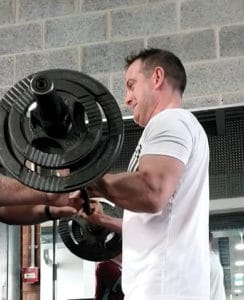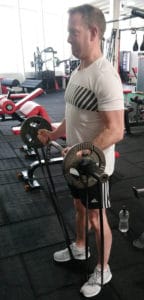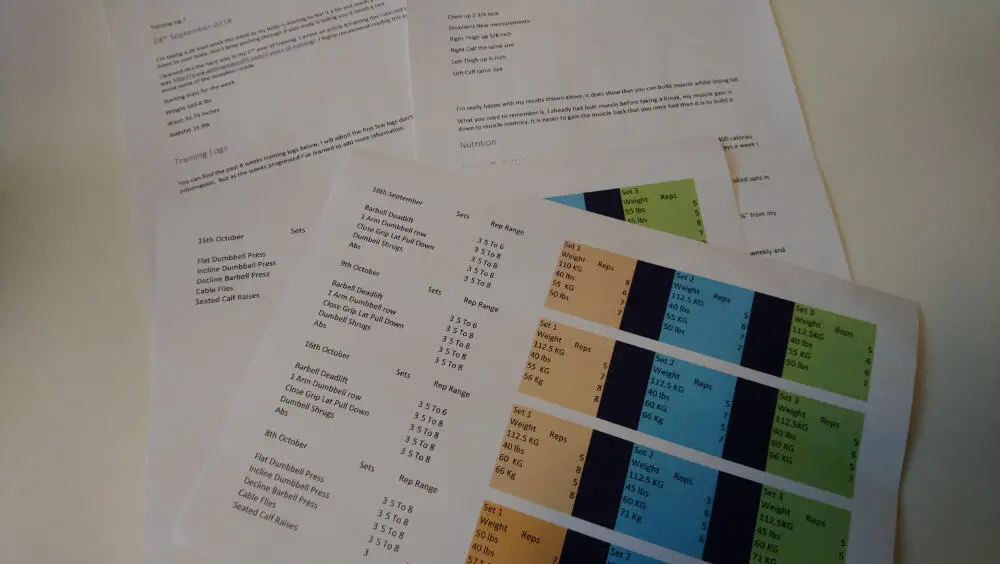What are Negative Reps?
In 1 of my other articles, I mentioned negative reps (Eccentric Training). I thought it would be a good idea to write an article explaining what they are. Almost every exercise can be split into two phases: a positive phase (concentric) and a negative phase (eccentric).
Eccentric training is described as training that involves only the eccentric phase of a workout, which is commonly referred to as a “Negative” or a “Neg” if you like.
During the concentric phase, muscles bunch up or tighten as you lift the load. In the eccentric phase, the muscles become stretched as you lower the load.
Here’s how that translates to your workout routine. If you’re doing arm curls, the concentric phase is the lifting part, and the eccentric phase starts when you begin to lower the bar.

Negative Resistance Reps

Your trainer or training partner can apply more resistance to the weight when lowering it so you can use more muscle strength in the process. You could also use resistance bands.
I will use the example of the barbell curl again. When you’re lowering the bar, your training partner can push down on the bar whilst you lower the bar and resist. You don’t want to lower the bar any quicker with the added resistance.
In this picture, you can see my training partner pushing down on the bar adding more resistance. I have to fight against this and control the weight as I lower the bar. As you can tell by my face it is hard work.
Why Negative Training is Essential
What we’re doing is using all our energy to lift the weight, then dropping it down with no control. The eccentric phase of the exercise, which is arguably the more important one in terms of strength and size building, is completely disregarded.
Negative reps are beneficial when building muscle strength and size. Athletes and professional coaches almost exclusively rely on negative reps for strength building.
Negative Training – How it Works
Why is eccentric training so effective?
There’s no magic behind it; negative training works simply because you’re fighting the weight. You’ve been doing negative reps all your life, the only difference this time is you’ll be skipping the concentric phase of the exercise and focusing purely on the eccentric part of it.
For negative training to work, three conditions must be met:
- You must lift between 5 % and 25 % more than you usually lift. So, if you normally use 200lbs weights, make it 210lbs instead. The average male has far more eccentric strength than they do concentric force. That is why you need heavier weights to maximize the effects of negative reps.
- You must slow down each rep to between 3 and 6 seconds per rep. Now, this is very important. You must control the descent of the weight all the way. That’s why it’s called “fighting the weight.” Negative reps are often fewer, and the only reason they’re significantly more effective is that you have to actively push up against the weights for a few seconds. You’re not lifting anything; you’re just controlling the descent of the bar.
- In most cases, negative reps require you to have a partner. Remember, you’re skipping the concentric phase entirely, plus you’re using weights you wouldn’t normally be able to lift on your own. You should have a spotter to help you reset after every rep.

In this picture, I’m using a resistance band for creating that add resistance. The band wants to contract back to its normal size, and pull down. I have to fight against the band’s will to contract and control the weight as I lower the bar. The eccentric part of the bicep curl is being lowered.
When to use Negative Reps
Eccentric training can be used exclusively or to enhance your normal workout routine. Trainers often use it in combination with regular concentric practices except when rehabilitating specific muscle groups.
Negative reps can be done by anyone regardless of their age, health, and physical capability. How should you incorporate them into your workout?
- Negative reps should be done AFTER the main exercise. Negatives are extremely demanding on the muscles. If you start with them, you’ll be worn out before you start your normal routine.
- Eccentric training only needs 1 – 3 sets per session. Each set can have around 3 reps, and each rep should not take less than 3 seconds to complete.
- Negatives can be mixed into your normal workout routine provided you know how to space them. If you’re bench pressing for 15 reps, make the last 3 reps of each set negatives. These negative reps should have a controlled lowering phase that lasts between 3 and 6 seconds.
How to Tell if You’re Doing Your Negative Reps Correctly
Eccentric training is highly personal, so it’s not possible for it to have the same effect on everyone. However, there are some indicators that the training is working.
For instance, if you slow down the eccentric phase of any workout, chances are you’ll not be able to power through the concentric part. Negative reps are normally spaced about 10 seconds apart to allow the muscle to rest.
Also, you only need a few sets to feel the burn. If you can match or exceed your normal reps while doing negs, chances are your weight is too light or you’re not slowing down enough.
Negative reps always cause muscle soreness the following day. It is perhaps the best indicator of its effectiveness since more damaged muscles equal bigger gains.
Benefits of Eccentric Training
1. Increased Hypertrophy and Strength
Negative reps are known to cause far more muscle damage than regular training. Muscle damage is a good thing as far as exercise is concerned. The more damage sustained, the more muscle growth that occurs.
Hypertrophy (size increase) and increased force are two of the effects of negative training that have been observed in young men.
2. Less Fatigue
Despite causing significantly more muscle damage, eccentric training typically results in less fatigue.
Experts explain this as an effect of the lengthening of the muscles. Longer muscles are more efficient than short, bunched-up ones. This is also the reason why negative reps increase muscle force.
3. Improved Flexibility
Eccentric training improves muscle flexibility, whether performed on its own or combined with static stretching.
4. Reduced Risk of Injury
Doing negative reps is like re-learning how to do a particular exercise. The leading cause of injury at the gym is improper technique, so eccentric training can reduce the risk of injury by a big margin.
Negative reps drastically reduce the chances of injuring yourself anew or triggering old injuries. Perhaps this is why it is highly recommended for athletes under rehabilitation as well as geriatric patients managing problems like tendinitis.
Conclusion
Negative reps certainly have their usefulness in muscle building. When used properly, they can facilitate considerable muscle gains as well as increased strength despite costing you less in terms of fatigue.
Negs are also much safer and help reduce the risk of injuries. They can be used to work out every major muscle group in the body.
Eccentric training might sound like a fancy new workout fad, but it’s a tried and tested way of increasing muscle size and strength in both professionals and fitness enthusiasts.
References Used in This Article
- Eccentric exercise: mechanisms and effects when used as a training regime or training adjunct.
- Skeletal muscle remodeling in response to eccentric vs. concentric loading: Morphological, Molecular, and Metabolic Adaptations.
- Eccentric muscle contractions: Risks and benefits.
- The effects of eccentric training on lower limb flexibility: a systematic review.
- Why is eccentric exercise affective for achilleas tendinopathy?
- Exercise for tendinopathy
- Does eccentric exercise reduce pain and improve strength in physically active adults with symptomatic lower extremity tendinosis? A systematic review




